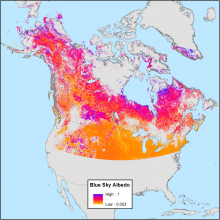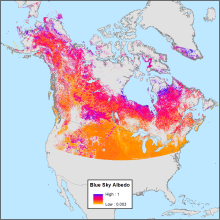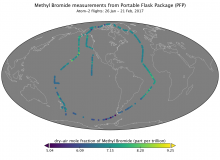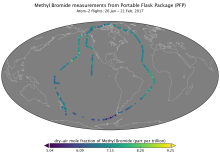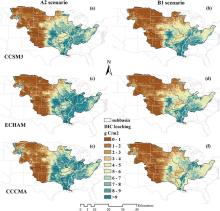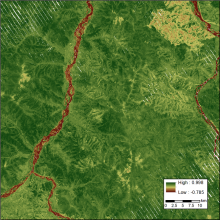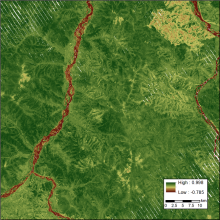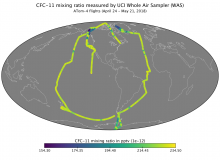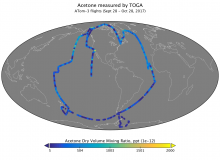Daily “blue sky” shortwave albedo data were derived from the MODIS bi-directional reflectance distribution function.
High Latitude Blue Sky Albedo
Daily mean shortwave blue sky albedo for February 28, 2000. Blue sky refers to albedo calculated under real-world conditions with a combination of both diffuse and direct lighting based on atmospheric and view-geometry conditions.

